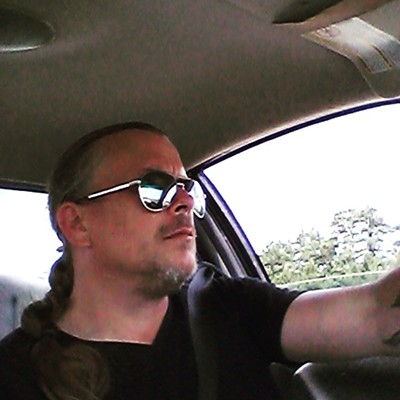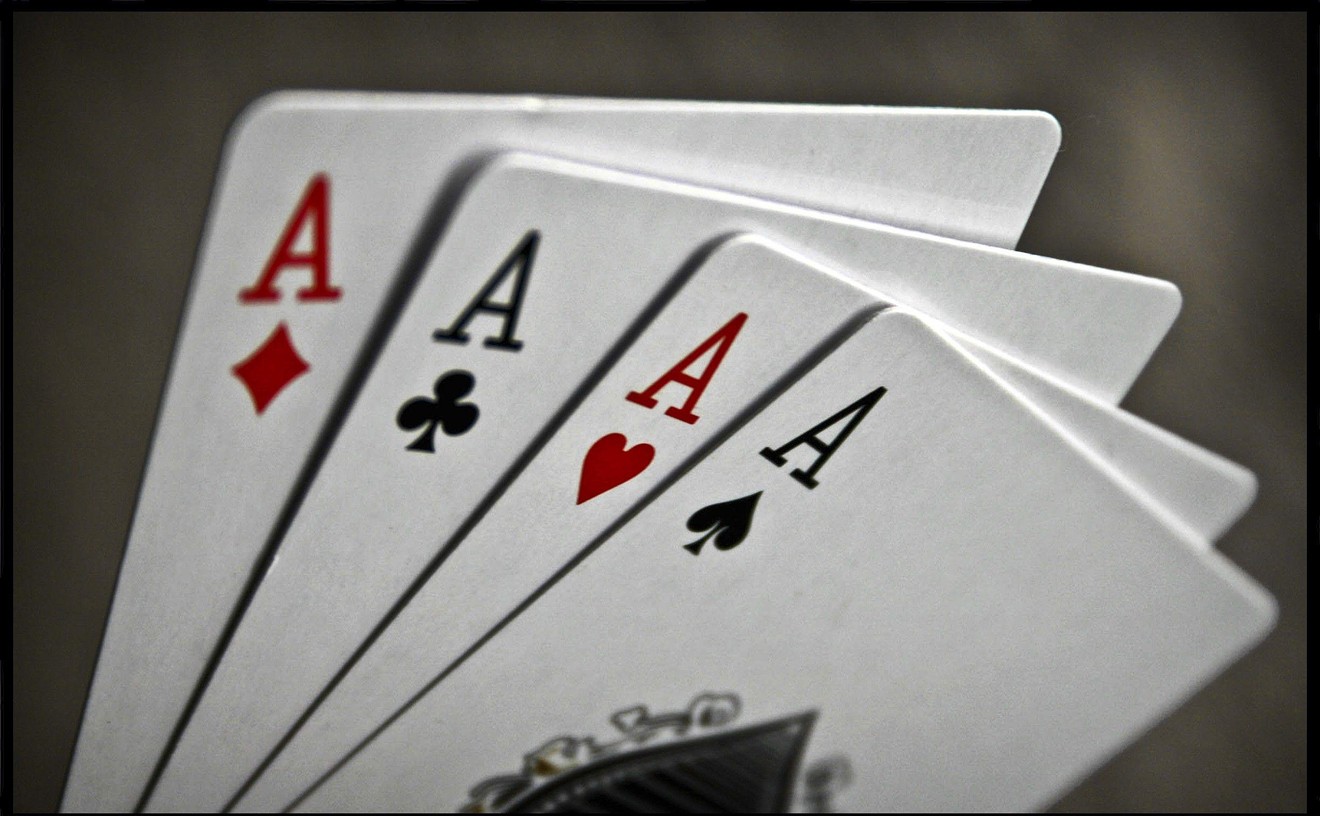A nameless black '83 Thunderbird and a red '86 Ford Mustang called the "Hater Hurter" shot down the drag strip like bullets fired from a gun. They roared to life surrounded by a crowd of street racers and spectators and, in seconds, flashed by the finish line moving at 120 and 130 mph. Some street racers take 12 seconds to reach the finish line at Yello Belly Drag Strip, an outlaw racetrack on the outskirts of Grand Prairie. Some complete the eighth-of-a-mile run in seven, eight or nine seconds, depending on the driver and his car. Blake Williams in the T-bird and Aki Gatson in the Mustang took only five seconds to reach their final destination.
A few weeks before the race, the 23-year-old Williams shaved 70 pounds off the T-bird's front end and swapped his dual 10-pound nitrous oxide bottles for a single 15-pound bottle he strapped into his passenger seat to help boost his engine. "I built the same quick change bottle bracket setup so it can easily be taken out for street-car activities," he told friends and family on Facebook.
Like many street racers lining up at "the Gut," Williams spent the past year modifying the '83 T-bird, which he called a "replacement of the ['78] Fairmont" he'd been working on since he was 16 years old. "It's bigger, heavier and not as good-looking, some say," he wrote. "But it's different; and that makes it all worth it, [a] no cage, pump gas, street car."
Unlike the late '70s model white Ford Fairmont he called "Judy," the early '80s black T-bird's fiberglass body was sleek, with curves and a large blower on its hood. He purchased it in December 2015 from a friend who had bought it as a spare-parts car for his other T-bird. Another friend later recalled, "He was pretty good about digging up diamonds in the rough."
His father, Stan, says his son had been looking for a side project to occupy his time while the Fairmont was down. "When he got his Fairmont, there weren't a whole lot of them around here," he says. "Now, all of the sudden, everybody is trying to get Fairmonts. So he wanted to be different. There are not a lot of T-birds running around."
Williams' father suggested naming the T-bird "Elvira." Another friend simply called it a "bad bitch" and told him to "get a damn (roll) cage," which street racers will sometimes install in their vehicles to protect them if they crash. Another friend echoed his sentiment on Facebook, "Need a cage so I don't have to go to your funeral, buddy!"
Williams still hadn't installed a roll cage 11 months later when he nosed the T-bird ahead of the Mustang, whose driver was protected by one. Williams crossed the finish line first, though the T-bird was running slower, according to Yello Belly's official race time stamp.
Once drivers cross the finish line, the win light shines red, alerting drivers to slow down; but they're still not out of danger. Slowing down at such a speed causes some cars "to get squirrelly," as Eason Wright, who runs the lights and clocks racers' times at Yello Belly, puts it.
But the Hater Hurter's driver didn't slow down.
The Mustang hit the T-bird first, witnesses say. The T-bird hit the end of the concrete barrier wall lining part of the track, then struck a tree a few feet away. The Mustang followed suit and hit a couple of trees. The impact caused the 15-pound nitrous oxide canister sitting next to Williams in the passenger seat under pressure to explode. The force of the crash ejected him out of the car.
He landed on the track 400 feet away.
"They were playing the street-car gig, but with the horsepower in their cars, they were stepping it up into the professional," Wright says. "The power of a pro-stock car in a street car without a roll cage."
Many racers play the street-car gig at Yello Belly Drag Strip, and their cars come in a variety of shapes and styles. Some look as if they roared to life out of a muscle car magazine. Some resemble the imported cars known as "rice burners" from Fast & Furious, a popular street racing movie series. Others look as if they were recently picked up from the junkyard. Some spit fire, and most of them smoke and growl. Tires flop, carburetors explode, headers blow — some never even reach the finish line.
Wright's mother Patricia, or "Mrs. Pat" as the racers call her, has seen all types of street cars lining up to race since she started working at the outlaw racetrack in the late '60s when she was in her late 20s. The 76-year-old Wright claims it's one of only a couple of "outlaw tracks" still operating in the country.
The racing community calls it "outlawing" since Yello Belly doesn't belong to the National Hot Rod Association, a professional organization that regulates drag racing. As a result, the Wrights, whose family has owned Yello Belly since the '60s, don't have many rules restricting street racers at the track.
For example, other sanctioned NHRA tracks require street racers like Williams and Gatson to install a roll cage for vehicles running 6.99 seconds or quicker in an eighth-of-a-mile or exceeding 135 mph.
At Yello Belly, it's more of a "run what you brung" track, meaning once the entry fee is paid, street racers can line up to race regardless of their vehicle. Some will carry their modified street cars on the backs of trailers, as Williams did when he pulled up to race on Nov. 17. Others will line up sitting behind the wheel of their work pickups and daily cars. It's a place where they can compete against each other without fear of red and blue lights appearing in their rearview mirrors.
"Racing is addictive like fishing and hunting," Patricia Wright says. "[The street racers] are all buddies. Some are functional, and some are dysfunctional. But it's a place for people to go and hang out and run grudge. There is not any place like it."
Yello Belly has been a Sunday afternoon mecca for North Texas' street racers for more than 60 years, drawing crowds from Oak Cliff, Duncanville and many other towns surrounding Dallas and Fort Worth.
Larry Bird, a veteran street racer of the track, says it's the competition and "all the pretty women" that keep bringing people out to the outlaw track. He's been street racing at Yello Belly on Sunday afternoons since the early '70s. He first raced a '69 Chevelle his dad gave to him without an engine. Today, he races a later 2000s model Camaro.
"I'd been racing and playing Evel Knievel on the bicycle forever," he says and looks over at some of the other street racers arriving late because of the Dallas Cowboys' football game. "Some of them can get a little rowdy, but hey, that's with anything you do. You get a little rowdy. Look at the Cowboys."
Wright's sister purchased the drag strip in 1968 from O.L. Nelms, who talked her into buying it. He'd originally purchased the site to open a farmer's market until one opened in Dallas. Some outlaws were racing Harley-Davidson motorcycles on his land because it was located in the unincorporated part of Dallas County where nobody would bother them. "It got to be a ruthless place," Wright's son Eason later recalled.
Nelms decided to asphalt the dirt track and opened the drag strip in 1955, but Wright says he didn't know much about street racing and sold it to her older sister. This lack of knowledge could have been one of the reasons why a street racer named Edward Walker filed a lawsuit against Yello Belly, claiming he suffered injuries when his race car struck "large holes or dug-out places in [Nelms'] race track, causing [him] to lose control of his automobile."
Walker, who was 30, had been driving a 1951 Ford pickup truck with a modified Pontiac engine at 100 mph when he lost control. He was running the same lane as Gatson in his Hater Hurter when he struck a pothole. He'd run the same lane the week prior and ran in the other lane several times before he lined up his truck at the starting line in the west lane at 10:30 p.m. Both lanes were simply separated by two parallel yellow-painted lines.
The court ruled in favor of the drag strip. "It has long been basic law in Texas that no matter how tragic or grievous an accident or injury may be, the defendant must first be found guilty of negligence of some sort that proximately causes the plaintiff's injuries," wrote an appellate judge from the Court of Civil Appeals in El Paso in 1961.
Two parallel yellow-painted lines still separate street racers lining up in the east and west lanes. To race at Yello Belly costs quite a bit more than the 50-cent entry fee in 1968. Today, drivers pay $10 on Thursday night and $8 on Sunday afternoon for six hours of racing.
Over the years, the Wright family has made some changes, such as installing new lights, replacing an old brick building infected with dry rot and setting up concrete barriers on each side of the drag strip. But, for the most part, the drag strip feels like time traveling back to the early '70s. Some racers still call it a "prehistoric track" despite the family's changes.
Wright's daughter Beth Wright-Taylor along with her brother Eason run the track for their 76-year-old mother and 82-year-old aunt. Wright-Taylor has been working there since she was 14 years old in the early '80s. One of her sons works the theater ticket booth. Two of her children work the concession stand directly across from a brick bathroom that was once segregated. Her middle son, Harley, works the fuel depot where nitrous oxide is sold for $5 per pound. Her youngest, who is 8, is too young to work the track, she says.
The Wrights' track workers also span generations. Allen Roberson has been working at the drag strip for 40 years. He started coming to the track with his father, who is also named Allen and raced under the moniker "Alley Cat." He garnered quite a reputation racing motorcycles at the outlaw track.
Roberson says his father and uncle used to run the track throughout the '70s and '80s for the Wrights. But he says it's not love of the Wright family that keeps him and other racers returning to the track like his father. "It is love for the place that we call our racing home," he says. "It is the racers and the love for racing there that keep the track going."
This love of racing sometimes leads to what's known as a "grudge race" at Yello Belly, though it isn't a sanctioned event. In a grudge race, drivers throw money into a pool and the winner takes all. The size of the pot can reach four digits, depending on the number of racers participating. Some of the old timers used to call it "a gentleman's bet."
It was a grudge race that brought Williams out to the track on Nov. 17. His family said he'd been called out to compete with four other street racers. He was also no stranger to grudge racing at Yello Belly or the disagreements that sometimes follow grudge matches. His brother Brandon says he'd run most of his grudge races at Yello Belly.
A couple of months before Williams lined up to race Gatson in the Hater Hurter, he raced another street racer in a grudge race and later disputed the race's results on Facebook because he didn't believe a race technically occurred because of lighting issues.
"So I'm not paying up," he wrote in a Sept. 4 Facebook post. "Bash me all you want. I don't care."
Another street racer replied in a follow-up comment, "A loss is a loss. You need to pay your debt like I would if the roles were reversed."
Their Facebook dispute was more polite than some of the disputes that have occurred in the past at the outlaw drag strip. It got its nickname "the Gut" because it's slang for "belly," though one street racer claimed another street racer had gutted someone with a knife in the '80s. It got so violent in the '80s that Williams' father quit racing out there.
Williams discovered his love of fast cars from his father, Stan, who got his love of fast cars from his grandfather and the salvage yards in Oklahoma when he was a child. Stan later became a mechanic and worked at various places before ending up at a Ford dealership in Texas where he met his wife, Dawn.
When he was a child, Williams would sneak out into the garage where his father would be working cars as a side project to earn extra money and start pointing at different auto parts, asking, "What's that? What's that? What's that?"
"Well, if he's going to be out here, I guess he's going to learn," his father recalls.
Stan gave him an old Holly carburetor as a toy when he was 6 or 7 years old. "I had to show him a couple of times how to put it back together," he says. "But after that, he would take it back apart and put it back together numerous times."
As he grew older, Williams would work on cars in the driveway until his father told him to stop. So he started working on cars out in the street. "Our neighbors loved us for a while there," his father says.
Williams got his first race car, a '78 Ford Fairmont, when he was 16 years old, but didn't start driving it until he got his driver's license at 17. A mentor gave it to him without an engine, and he started "tinkering with it" at his older brother Brandon's "chop shop" located behind his older brother's house. He started taking the Fairmont out to the racetracks in Kennedale and Denton. He would later test street cars at Yello Belly because he worked on many of the street racers' cars at his mechanic shop, Williams Racecraft in Arlington, where he would also fabricate roll cages and front tubing.
"Unfortunately, he did come from the street racing scene," his father says. "We would harp him, 'Don't do that, son. Don't do that' before he made it [racing] legit."
Williams became a track racer when he found out he could win big money.
He met his girlfriend, Sara Slisz, a couple of years ago at a racetrack. She came from a racing family. Her brother, Stefan, was well known in the racing scene. They planned to marry and had recently had a son they named Lincoln when Williams was called out to a grudge race at Yello Belly for a $2,500 pot.
"It was very hard for him to get races because they knew how fast his T-bird was," Williams' father says. "I've got to admit he could drive that car. He was a very capable driver."
Williams' driving skill put him across the finish line first.
At 122.45 mph, his black T-bird wasn't faster than Gatson's red Mustang, which clocked at 130.13 mph when they crossed the finish line. Williams' reaction time of 0.6034 seconds compared with Gatson's 0.6660 caused him to get off the start line faster and win the race, according to Eason Wright's estimation.
"But [Gatson] had so much ego that he stayed in it after the finish," says Wright, who witnessed the accident from his faded checkered race tower. "He'd been bragging all evening he was going to win."
Gatson couldn't be reached for comment.
They passed the red win light, which indicates they needed to slow down, still "hauling ass" and nearly passed the concrete barriers. Then Gatson's Mustang began to fishtail.
The Hater Hurter cut all the way over into the other lane and slammed into Williams' black T-bird, pushing it into the corner of the wall and finally into an old elm tree on the side of the track in an area once known as "no man's land," Wright says.
The front half of Williams' car disappeared, and then his engine flew out. A bright flash of light like a firecracker in the night ignited as the nitrous oxide in Williams' passenger seat exploded. Then he was ejected out of the car and onto the track lane where Gatson had been racing, broken, bloody and burned.
"In 60 years, no one has hit the tree," Wright says.
Dawn Williams sat next to a tree across from the track where her son lay covered with a black blanket. At 11:17 p.m. on, coincidentally, Nov. 17, she'd received the call about her son's death from his girlfriend, who received a call from her brother, who'd been racing at Yello Belly earlier that evening.
Yellow caution tape blocked the section of the track where the accident occurred, and she wasn't allowed to cross the barrier to hold her son or see his face. So she simply sat next to the tree as officers from the Dallas County Sheriff's Office collected evidence.
"I was sitting by the tree just looking at his car," she says. "I could have stayed there forever."
She last spoke with her youngest son earlier that evening. He told her that he got called out on a race. "He said, 'Bye, mom,'" she later recalls. "But he just seemed hesitant."
She and her husband don't think a roll cage would have helped her son survive the force of the crash. A paramedic told one of the drag strip owners that her son died instantly when he hit the steering wheel. He was pronounced dead at the scene at 11:15 p.m.
"It's just a matter of bad luck," her husband says. "It could have easily been the other way around. It could have been him. It was a very unfortunate accident. It was terrible."
Eason Wright stood next to a pile of wood shavings that had once been the old elm tree Williams had hit, looking at a small crystal vase with a purple flower placed in the center of where the tree once stood. The 53-year-old son of Patricia Wright, one of the owners of Yello Belly, wears a red jacket and a pair of green earphones. He's been running the race lights and clocking racers for decades.
He's been coming to the track since he was 7 years old and witnessed all kinds of races and crashes. But Williams' accident on Thursday night two weeks ago is the worst he's ever seen at Yello Belly. It's an accident that still seems to haunt him as he walks the path the cars took after they collided shortly after crossing the finish line.
"I want to cut down a couple more trees over there," he says, motioning farther down the track.
Wright and his sister Beth have big plans for the outlaw drag strip. They are promoting an energy drink called "Rocky Mountain High" at the concession stand in hopes of landing a sponsor to fuel other changes they'd like to implement. They hired "high dollar" security with military experience over the summer. Veterans now patrol the parking lot with handguns on their hips.
The Wright family also began enforcing some safety policies like wearing helmets, though not every street racer wears one on this Thursday night in early December.
They require drivers to sign a waiver to race and recommend roll cages if the cars run faster than six seconds on the eighth-mile. But he says they can't force street racers to install roll cages unless they sponsor the event for prize money. It's a situation the Texas Racing Commission doesn't outline in its rulebook.
The Dallas County Sheriff's Office is still investigating Williams' accident, but Melinda Urbina, the department spokesperson, says Williams and Gatson were racing legally and that the drag strip has a permit to operate races.
"The detective on the case believes it was a tragic accident," Urbina says. "Witnesses stated there was no confrontation or strife between drivers. Moving forward we do not expect any criminal charges to be filed against the surviving driver or the drag strip."
Wright agrees with the sheriff's office. He says both drivers were having problems with their throttles sticking, though he still doesn't understand why Williams didn't install a roll cage in the T-bird. Gatson installed one is his red Mustang, he points out, and walked away from the crash after he hit a couple of trees.
"The cars were running 5.42 and 5.47 (seconds) on an eighth-mile track," Wright says and motions toward the brush. "There is part of the Mustang." He looks toward another bush. "There is part of the T-bird right there." He approaches some of the wreckage. "Here's the car seat right here, and here's the back seat to the T-bird." Both seats are mangled, and a black tennis shoe that may or may not be Williams' sits among the wreckage.
"They didn't build those cars like a fortress," Wright says, standing among the wreckage. "It's like crushing an aluminum can."
It's been two weeks since Williams' deadly accident, and Wright and other track employees claim street racers are thinking about being more cautious. "Some of them who come out here and grudge race don't always put roll cages in their street cars," he says. "But now they're like, 'We need to look at safety.'"
Later that Thursday evening, two weeks after Williams' death, a late model black Mustang with low profile tires lined up to run a solo race. Wright says they were preparing to close the track, but the street racers wanted to race after the cleanup, or they'd hit the street and race somewhere; so Wright and his family kept the track open a little later.
As the late model black Mustang rocketed down the track, his car began to skid, Wright says, because he had the wrong tires; he should have been racing slicks or racing radials, he says. Instead of easing off the throttle to straighten out his car, the driver refused to back off the throttle. He hit the wall but walked away, though the Mustang lost its face.
Another factor may have been the cold weather since more wrecks happen in the winter because a colder track surface can affect traction; racers recommend making a "hotlap" to heat up the tires. It's the reason tracks like North Star Dragway in Denton close during winter; Yello Belly is open all seasons.
"This is how accidents happen at our track," Wright says. "He did not let off the gas."
As he walks away from the wreckage, he tells the Observer's photographer, "It's ironic. Sad, but ironic, because that's exactly what happened the other night."
Three days after the late model black Mustang hit the wall at Yello Belly, family, friends and fellow street racers gather to honor Blake Williams at North Star Dragway in Denton. The track opened on this Sunday afternoon in early December so they could pay respect to a fellow street racer the only way they knew how: by showing off their street cars, spinning tires in burnouts and cruising down the road in a 30 minute cruise that may or may not end with a few of them racing each other.
More than 450 street racers attended Williams' funeral in Hurst the day before his Sunday memorial run. Forest Ridge Funeral Home later told Williams' family it was the largest crowd they've ever hosted. "You can go on Facebook and see all the burnout videos," says Williams' older brother Brandon, who performed a burnout in his yellow '81 Fairmont. "They said it was the largest funeral they've ever had and the only one that ended in a burnout."
No law will be showing up to tell them to shut it down on this Sunday afternoon at North Star Dragway. Williams frequented the track with family and friends who now gather at North Star to honor him.
Fellow street racer PJ Schulz says his friend worked on about 80 percent of the cars gathered at the track today. Schulz stands next to a gray '88 Ford Mustang that once belonged to the Texas Department of Safety. It was a patrol car the state decommissioned and sold to another owner who sold it to another owner who sold it to him. Williams helped him rebuild the car.
"We've kind of butchered it," he says.
Schulz calls it a snowball effect. He replaced one part, decided he didn't want to bolt up all the stock stuff he had to remove. So he ended up doing the front suspension, then the rear suspension, all the brakes on the car, etc.
Williams also helped him to install the roll cage, and they'd finished working on the front end of the car shortly before he died. Williams is the one who talked him into getting the Mustang back on the track. He wasn't able to take the Mustang to the funeral, but he spent Friday and Saturday working on it with his daughter and friend so he could bring it to North Star on this Sunday afternoon. The last time he took it out to the track, the Mustang stood straight up and started spewing fuel.
Williams' older brother didn't bring his yellow '81 Fairmont to the burnout because the front tire was slashed. But he did bring video of the burnout in front of the funeral home. As he shows the video, he discusses his and his brother's love for Fairmonts. They rebuilt them in the chop shop behind his house, replacing the cars' innards with Mustang parts.
"It's an old grandpa car," he says. "But the wheelbase is better because it's a little bit longer than a Mustang so if you do a wheelie, it isn't as bad."
They used to take their Fairmonts to the drag strip over in Kennedale where wheelies would often happen, usually whenever they took off from the start line, but he didn't go to Yello Belly Drag Strip with his brother, who would often race out there because he knew a lot of the racers.
"I hate Yello Belly," he says. "I've been there twice. The first time was when Blake hit the wall. The second time was whenever the accident happened. I told him the first time that I would never go back. And I ended up having to go back."
Williams' father, Stan, stands next to his older son and offers, "If you look at the positive side of it, at least it keeps them off the street."











